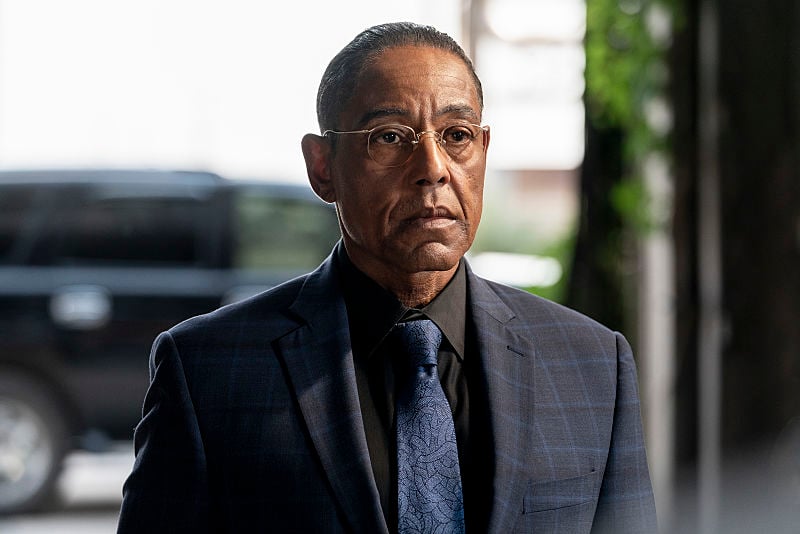‘Breaking Bad’ Gus Fring’s Crazy Death Scene in ‘Face Off’ Had Some Subtle Chicken Man Symbolism
There’s so much subtle symbolism in the AMC drama series Breaking Bad that even the most fervent fans have a hard time keeping track. From the use of colors, music, and setting down to the makes of cars the characters drive, the show has always sent silent messages to anyone who’s paying attention.
One of the most dramatic moments on the show included very understated symbolism that only the most observant viewers picked up on. And it all had to do with Gus Fring getting blown up by Hector Salamanca in the episode “Face Off.”
Who was Gus Fring, also called ‘The Chicken Man’?

They say that some of the cleverest criminals hide in plain sight, and that was the exact strategy used by drug lord Gustavo Fring on Breaking Bad. Gus was a prominent business owner in Albuquerque who ran a chain of fast-food restaurants called Los Pollos Hermanos (The Chicken Brothers).
The audience also knew that Fring was a criminal mastermind with a secret meth operation. He was working for a Mexican drug cartel but eventually made plans to strike out on his own and double-cross his employer, Don Eladio of the Juárez Cartel. Walter White and Jesse Pinkman worked for Gus — until they had him killed.
Thanks to his day job, Gus Fring earned the nickname “Chicken Man.”
Walter White enlisted Hector Salamanca to help murder Gus Fring
Because he led such a dangerous life with so many enemies, Fring was not an easy person to kill. Walter White had one failed attempt under his belt before realizing he had to get creative.
To pull off Fring’s assassination, Walt rigged a bomb to Hector Salamanca’s wheelchair, essentially turning him into a suicide bomber. Even though Hector hated Walt, he despised Fring even more and had ever since they were rivals both working for Don Eladio. He was happy to help take down his former associate.
Hector set up a meeting pretending to snitch to the DEA. Fring found out about it and visited Hector at the nursing home, planning to inject a lethal dose of poison as punishment. But first, Hector rang his signature bell to detonate the bomb and killed himself and Fring.
Fans wondered if Fring was truly dead
After watching Fring maintain control in every situation with his serious, ruthless stare, it seemed impossible that he could really be dead. For a few tense seconds following the bomb exploding, fans see Fring walk slowly out of Hector’s room, seemingly unscathed. Could he really have survived a bomb going off so close to him, they wondered?
But then the camera switched angles to reveal half of Fring’s face was blown off right before the former drug boss collapsed and died. The scene is shocking, graphic, and unforgettable. It’s also rife with symbolism about who Fring was.
Gus Fring became a chicken man in real life
The phrase “running around like a headless chicken” refers to the phenomenon farmers face when a chicken keeps moving after having its head cut off. This is due to nerve endings that keep functioning for a few seconds despite being detached from the brain.
Just like a headless chicken, somehow Fring’s body was propelled forward in those final moments, making Breaking Bad fans wonder if he really died. And just like that, the Chicken Man became a literal chicken man.
It’s just further proof of the brilliant symbolism that’s used throughout Breaking Bad.


